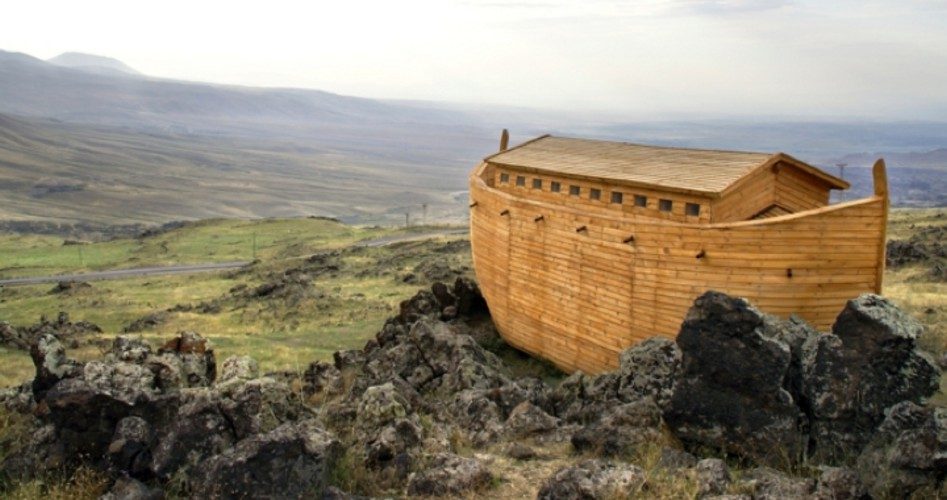
The release of the movie Noah has rekindled interest in the biblical account of a global flood and God’s provision for humans and animals via an Ark. While the film has received its fair share of criticism for its departures from Scripture, one key facet of its story taken directly from Genesis has recently been declared scientifically sound: The Ark, built to God’s specifications and carrying all the necessary animals, could indeed have floated.
A team of fourth-year master’s students at the University of Leicester’s Department of Physics and Astronomy (U.K.) has published a paper in the peer-reviewed, student-run Journal of Physics Special Topics arguing that Noah’s Ark could easily have stayed afloat with two of every kind of “unclean” animal and seven of every kind of “clean” animal, exactly as described in Genesis 6-8.
“The aim of the [special topics] module is for the students to learn about peer review and scientific publishing,” course tutor Dr. Mervyn Roy said in a university press release. “The students are encouraged to be imaginative with their topics, and find ways to apply basic physics to the weird, the wonderful and the everyday.”
The students — Oliver Youle, 22; Katie Raymer, 22; Benjamin Jordan, 21; and Thomas Morris, 22 — certainly put their imaginations to work. According to their paper, after reviewing the Genesis account of God’s instructions to Noah, they thought: “Now, whilst God is often regarded as infinitely wise, we wonder whether God paused to consider the physics behind such a request. What would the buoyancy force be for an ark of such dimensions and therefore could the ark support the weight of all the animals?”
“Every object when immersed in a liquid has an upwards force acting against it — a buoyancy force; it also has a weight acting downwards — a downwards force, and in order for it to float, these two forces need to be equal,” explained Youle, the lead researcher. Physicists refer to this law as Archimedes’ principle after the ancient Greek scientist who first stated it formally.
Although the students applied some relatively simple mathematical formulas to arrive at their results, getting the numbers to plug into those formulas proved a bit tricky. For one thing, the Ark’s dimensions are given as 300 cubits long, 50 cubits wide, and 30 cubits high — but how long is a cubit? “The cubit is an archaic length based on the distance between the elbow and the tip of the middle finger,” the students wrote. Not surprisingly, therefore, “various ancient cultures disagree on the exact length of a cubit.” The students settled on the average length from antiquity, 48.2 centimeters, giving an Ark that was 144.6 meters by 24.1 meters by 14.46 meters.
Another problem arose in determining the density of the Ark. The specific type of wood used to build it is unknown. The King James Version translates the ancient Hebrew as “gopher wood”; other versions translate it as “cypress.” Some other types of wood have also been suggested, but since the densities of all these timbers are similar, the researchers settled on cypress.
Once these assumptions were established, the students were able to set about determining how much weight the Ark could hold before it sank. They first calculated the mass of the empty Ark and found that it would sit very near the surface of the water, its bottom a mere 0.34 meters below the sea level. Then they figured out the total mass of water that the Ark would displace if it sank to the point that its top was even with the surface; that, according to Archimedes’ principle, is the Ark’s buoyancy force. Subtracting the mass of the Ark from the total mass of displaced water gave them the amount of weight the Ark could hold without sinking: about 50,540,000 kilograms.
Now the only question remaining was whether that was sufficient to permit the Ark to carry the vast number of animals required to preserve all the different kinds of creatures on Earth.
The students noted that “scientists have classified over 1.5 million animals to date.” However, not all animals, and certainly not every variety of each kind of animal, would have needed to board the Ark. Sea creatures, for instance, could have survived a worldwide flood in the wild, and only one pair of each type of land animal would have had to board the Ark to preserve its kind.
Creationists, who tend to view a literal global flood as the source of most of the Earth’s sedimentary rocks and fossils, have estimated that as few as 2,000 or as many as 35,000 individual animals were needed on the Ark. One creationist work that examined the feasibility of Noah’s Ark, John Whitcomb and Henry Morris’s 1961 book The Genesis Flood: the Biblical Record and Its Scientific Implications, “suggests that an average mass of all the animals aboard the ark is approximately equal to the mass of a sheep,” the students wrote. On that basis, they calculated that “the ark could support the weight of 2.15 million sheep.” That, in turn, means that there was plenty of support capacity for even 35,000 animals — or, for that matter, pairs of over two-thirds of the animals thus far identified. “Therefore,” the students concluded, “regardless of which figure is correct, we believe the ark to be of sufficient buoyancy.” (The study did not address whether or not the Ark would actually have been large enough to house all the creatures.)
“You don’t think of the Bible necessarily as a scientifically accurate source of information, so I guess we were quite surprised when we discovered it would work,” said Thomas Morris. “We’re not proving that it’s true, but the concept would definitely work.”


